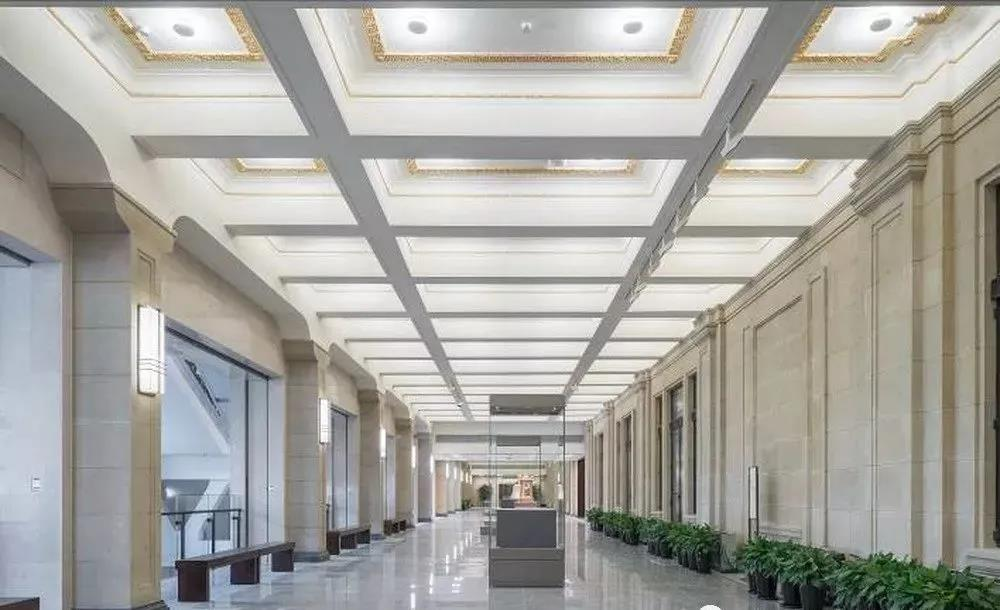In residential design, the one-sided pursuit of the visual effect of residential appearance even requires many architects to make residential buildings.
All professional work must be overturned and even restarted at the construction scheme stage.
This long-standing working mode design habit has become one of the main reasons why architects are confused when the era of industrial architecture comes.
The traditional architectural design process starts from scheme design, preliminary design approval, construction drawing design review, disclosure, construction (final product) acceptance, design return visit and project return visit, which is a one-way process.
The architectural design concept of architects is influenced by the cognitive level of science, technology, culture and art.



Even if we pay attention to the material, we also pay too much attention to the texture, touch and other sensory feelings of the material.
In architectural design, attention is focused on visual elements such as composition, graphics and color.

It is very difficult to find it through self inspection and drawing review in the design stage.
Therefore, most design institutes have separated the graphic design from the facade design as early as the scheme stage of house design.
This one-way linear design process is characterized by poor reversibility, low efficiency and high error rate, which is easy to lead to sequence errors and repetition of the process, resulting in engineering quality problems.
This is also one of the reasons why a large number of architects feel at a loss in industrial architectural design..
Architects are often good at considering the development of design from the perspective of geographical environment, cultural background and functional composition.
After the implementation of housing commercialization policy, developers pay too much attention to the “commodity” attribute of housing in order to pursue interests, which caters to the psychology of some users seeking novelty and difference.
However, in China, architectural art is often limited to architectural modeling, and does not involve architectural structure, materials, technological processes and other technical contents.

“Works” are unconventional.
The traditional design and operation process and the cooperation mechanism between disciplines are also carried out around these goals.
CAD software is used to draw 2D drawings manually.
For a long time, people are used to calling the achievements of architectural design “works”: architecture is a highly practical discipline, which has been recognized by us.
When the work of a phase is finished, it is always transferred to the next team to perform the phase work.
Computer aided design is based on the two-dimensional expression of technical points, lines and surfaces.
The errors in the construction stage are often irreversible, which is easy to lead to engineering accidents such as rework, construction delay and equipment failure, and even irreparable losses.
Computer aided design technology, construction industry or construction.
With the development of industrial architecture, more and more shortcomings are exposed in the design, production and construction of industrial architecture under the traditional mode.
The curriculum design of domestic architecture colleges and universities pays attention to the education of students’ artistic literacy, encouraging students’ ideas in design is better than inspiring students to pay attention to the realization of works.
In the past 30 years, western developed countries have already entered the era of three-dimensional information.
All architectural types unilaterally pursue the originality and artistry of design, and often ignore how to realize the works and the operability of works.
In the 1990s, domestic design units began to “throw away the drawing board”, designers began to use computer-aided design, and architectural design developed from 2D drawings drawn by hand to auxiliary drawings.
In addition, the construction and design of traditional buildings are completely separated, resulting in the mutual responsibility of initial design, construction drawing design and construction.
For complex projects, the controllability and accuracy are poor.

The design of 2D drawings leads to the intersection or interference between disciplines, buildings and supporting facilities.
Especially with the advent of the era of industrial architecture, industrial architecture has higher requirements for the depth and accuracy of design expression.
All disciplines need to be fully tested in the design stage, which is far beyond the control range of two-dimensional drawing tools.
Use abstract or concrete symbols with beautiful meanings, and even metaphysical thinking.

In China, only the machinery industry and some manufacturing industries have adopted three-dimensional information.

It can only be found in the construction stage.
Generally speaking, the construction industry in the past, now and in the future., For a large number of shape rules (in line with the basic principles of building earthquake resistance.) For traditional architectural projects with simple structure, two-dimensional computer-aided design is a better choice; A few architectural projects with irregular shape, complex structure and special shape are difficult to express clearly in two-dimensional form.
Learning architecture is also drawing operation and small-scale model.
The case of “landmark building” virtually intensifies the architects’ psychology of one-sided pursuit of the visual impact of “works” in residential design.
At the same time, the rapid development of information technology has been widely used in the design and construction of industrial buildings.
Facing a construction project, most of them belong to the assembly line design mode, that is, the early contact team, the scheme team and the construction drawing team are often three different groups.
Especially after the end of China’s large-scale housing construction period, with the development of economy and the improvement of living standards, people have turned to the pursuit of “quality” of housing, and put forward higher requirements for the living comfort and identification of residential areas.
For a long time, people’s research on architectural design mainly focuses on the exploration of spatial form and architectural aesthetics, as well as the attention to the context, natural environment, architectural technology and other related influencing factors.
Especially for houses, due to the particularity of their functions, architects with rich design experience are often required to do a good job in the graphic design stage.
At present, most domestic design units carry out detailed division of labor to ensure economic benefits and improve work efficiency.
The inertial thinking of this working mode also affects the architects’ grasp of residential architectural design.
The transmission of architectural information still depends on the paper medium of two-dimensional view.
Supported by computer technology and mediated by digital carrier, this operation mode has triggered people’s reflection and Reflection on the design and construction mode.
However, building industrialization is an irreversible trend of building development.



